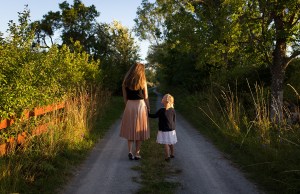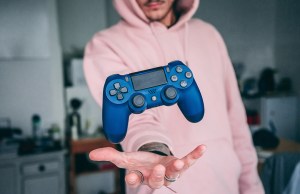- People debate about whether watching violence makes us more likely to engage in violence ourselves—of which was precisely explored in the Bobo doll experiment.
- In this experiment, Albert Bandura and his team of researchers studied 72 kids who experienced either an aggressive or non-aggressive model.
- In the aggressive model, the kids (one by one) played with an adult who, at some point or another, acted violently toward a Bobo doll; in the non-aggressive model, the adult did not have any contact with the doll.
- Afterward, the kids were left alone in a room filled with toys, of which included a Bobo doll amongst other “aggressive” as well as non-aggressive toy options.
- The researchers made a few observations, one being that the kids who were exposed to the aggressive model were more likely to engage in aggressive acts themselves.
- In conclusion, Bandura’s team found that we do learn through observation and imitation.
Society has long debated whether exposure to violence causes one to be more violent themselves—with one side of the aisle claiming it plays no part, and the other insisting it plays a huge part. A big focus of this argument is on the role of violent media: TV shows, movies, and video games. Does watching a show or movie about war have an effect on the viewer’s violent tendencies? Does playing an active shooter game? In sum, is violence and aggression learned or is it, perhaps, inborn instead?
If we trace this question back to its roots, we arrive at the Bobo doll experiment: a prominent experiment, conducted by renowned Psychologist Albert Bandura, designed to investigate the potential link between exposure to violence and violent actions. Let’s take a look at the specifics of this experiment and most importantly, what Bandura concluded in exploring this important question.
What Is the Bobo Doll Experiment? The Basics
As mentioned above, the Bobo doll experiment was conducted to understand whether aggression (or violence) is learned through observation. To explore this question, Bandura and his research team studied a group of 72 kids—36 girls and 36 boys who fell between 3 and 6 years old. First, the researchers observed how aggressive each kid appeared and rated their aggression on 5-point scales. Then, they split the kids up into three groups of 24, one being the control group.
One of the remaining groups was then exposed to an aggressive model (one child at a time), and the other was exposed to a non-aggressive model (again, one at a time). Finally, they were divided again by gender and then finally in halves, so some experienced a same-sex adult model and others experienced an opposite-sex adult model.
Experimentation and Investigation
In the aggressive model, a child was first introduced into a play area with various toys to play with, including a Bobo doll. Shortly after, an adult would join and play with the child. During this playtime, the adult would violently attack the doll, both physically and verbally. In the non-aggressive model, the adult would engage with the other toys and simply ignore the Bobo doll.
Afterward (in both models), the child was taken into a different room filled with toys—of which they were told they weren’t allowed to play with. Then, they were taken into one last room, which also filled with toys—“aggressive” and non-aggressive toys—like a tether ball, trucks, a dart gun, crayons, and a Bobo doll. The researchers observed the kids behavior, specifically in regards to their aggression levels.
Results and Conclusion
Bandura’s experiment gave the team excellent insight into whether or not exposure to violence and aggression correlates with one’s own violent or aggressive actions. In sum, the team observed the following:
- Generally speaking, the kids modeled the behavior they observed in their adult counterpart once they were alone.
- The kids exposed to the non-aggressive model displayed less aggression than the control group, which didn’t participate in any model.
- Boys were more likely to model physical aggression, while the girls were more likely to model verbal aggression.
- Overall, boys were more likely to act aggressively than girls were; more specifically, boys engaged in over twice as many aggressive acts.
So, Is Violence Learned?
The results of the Bobo doll experiment support Bandura’s social learning theory, which states that we learn through our observations and interactions with others. Bandura’s team agreed that their study proved this theory to be true. Additionally, Bandura noted that the children believed their actions toward the Bobo doll were acceptable based on the adults’ actions. In conclusion, based on the results of this experiment, violence can be learned through observation and imitation.













